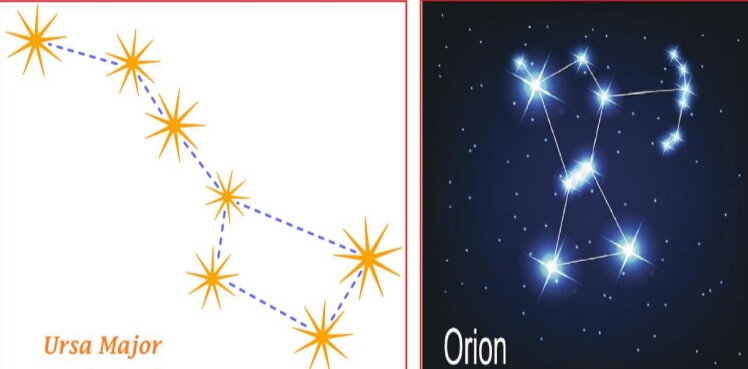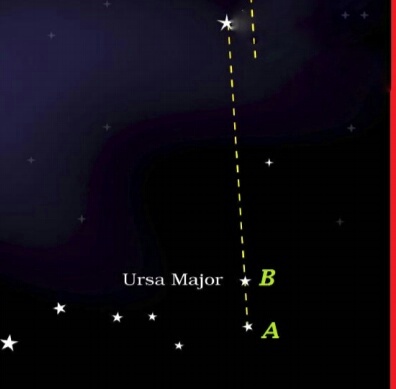Science
Chapter 17: Stars and The Solar System
Class: VIII
NCERT Solutions
Question 1
Choose the correct answer in Question:
Which of the following is NOT a member of the solar system?
(a) An asteroid
(b) A satellite
(c) A constellation
(d) A comet
Answer 1 (c) A constellation
Question 2
Choose the correct answer in Question:
Which of the following is NOT a planet of the sun?
(b) Mercury
(c) Saturn
(d) Earth
Answer 2 (a) Sirius
Question 3
Choose the correct answer in Question:
Phases of the moon occur because
(a) we can see only that part of the moon which reflects light towards us.
(b) our distance from the moon keeps changing.
(c) the shadow of the Earth covers only a part of moon’s surface.
(d) the thickness of the moon’s atmosphere is not constant.
Answer 3 (a) we can see only that part of the moon which reflects light towards us.
Question 4
Fill in the blanks:
(a) The planet which is farthest from the Sun is ____________.
(b) The planet which appears reddish in colour is ____________.
(c) A group of stars that appear to form a pattern in the sky is known as a ____________.
(d) A celestial body that revolves around a planet is known as __________.
(e) Shooting stars are actually not ____________.
(f) Asteroids are found between the orbits of _________ and _________.
Answer 4
(a) The planet which is farthest from the Sun is Neptune.
(b) The planet which appears reddish in colour is Mars.
(c) A group of stars that appear to form a pattern in the sky is known as a Constellation.
(d) A celestial body that revolves around a planet is known as Satellite.
(e) Shooting stars are actually not Stars.
(f) Asteroids are found between the orbits of Mars and Jupiter.
Question 5
Mark the following statements as true (T) or false (F):
(a) Pole Star is a member of the solar system. ( )
(b) Mercury is the smallest planet of the solar system. ( )
(c) Uranus is the farthest planet in the solar system. ( )
(d) INSAT is an artificial satellite. ( )
(e) There are nine planets in the solar system. ( )
(f) Constellation Orion can be seen only with a telescope. ( )
Answer 5
(a) Pole Star is a member of the solar system. (F)
(b) Mercury is the smallest planet of the solar system. (T)
(c) Uranus is the farthest planet in the solar system. (F)
(d) INSAT is an artificial satellite. (T)
(e) There are nine planets in the solar system. (F)
(f) Constellation Orion can be seen only with a telescope. (F)
Question 6
Match items in column A with one or more items in column B:
|
A |
B |
|
(i) Inner planets (ii) Outer planets (iii) Constellation (iv) Satellite of the Earth
|
(a) Saturn (b) Pole Star (c) Great Bear (d) Moon (e) Earth (f) Orion (g) Mars |
Answer 6
|
A |
B |
|
(a) Inner planet (b) Outer planets (c) Constellation (d)Satellite of the Earth
|
(e) Earth, (g) Mars (a) Saturn (c) Great Bear, (f) Orion (d) Moon
|
Question 7
In which part of the sky can you find Venus if it is visible as an evening star?
Answer 7
Venus become visible after sunset that is why it is called evening star. It appears in the western horizon.
Question 8
Name the largest planet of the solar system.
Answer 8
Jupiter is the largest planet in the solar system.
It is so large that about 1300 earths can be placed inside this giant planet. However, the mass of Jupiter is about 318 times that of our Earth.
Question 9
What is a constellation? Name any two constellations.
Answer 9
The stars forming a group that has a recognisable shape is called a constellation.
Examples: Great Bear, Orion, Cassiopeia and Leo Major.
Question 10
Draw sketches to show the relative positions of prominent stars in
(a) Ursa Major and (b) Orion
Answer 10

Question 11
Name two objects other than planets which are members of the solar system.
Answer 11
Comets, Asteroids and Meteors.
Question 12
Explain how you can locate the Pole Star with the help of Ursa Major.
Answer 12
Look at the two stars (Marked A and B in the figure) at the end of Ursa Major. Imagine a straight line passing through these stars. Extend this imaginary line (From A to B) towards the north direction. (About five times the distance between the two stars). This line will lead to a star which is not too bright. This is the Pole Star.

Question 13
Do all the stars in the sky move? Explain.
Answer 13
All the stars move in the sky from east to west. Earth rotates about its axis and the pole star, which is situated in the direction of the earth’s axis. It does not appear to move.
Question 14
Why is the distance between stars expressed in light years? What do you understand by the statement that a star is eight light years away from the Earth?
Answer 14
Stars are at a distance of millions of kilometres from the earth. Thus, these large distances are expressed in light years. One light year is the distance travelled by light in one year. One light year is equal to 9.46 × 1012 km.
If a star is eight light years away from the Earth. It means that the time taken by light to travel in eight years. So, the distance between the star and the Earth is given by
8 × (9.46 × 1012)km = 7.6 × 1013 km.
Question 15
The radius of Jupiter is 11 times the radius of the Earth. Calculate the ratio of the volumes of Jupiter and the Earth. How many Earths can Jupiter accomodate?
Answer 15
Let the radius of the Earth be R, so the radius of Jupiter be 11R.
Volume of Jupiter/Volume of Earth = 4 /3 (11
Yearlong program for Olympiads preparation & to build necessary skills for future.
Explore More
Time to mark your calendar with the upcoming Olympiads exam schedule.
Explore More
Take your Olympiad preparation to next-level by taking LIVE Classes.
Explore More
Assess your performance by taking topic-wise and full length mock tests.
Explore More
Online tuitions for international compeitions like SASMO, SEAMO, etc for Grades 1-11.
Explore More